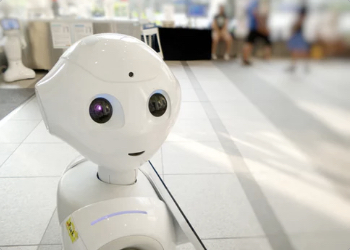When understaffed, a business does not have the appropriate number of employees on the clock to efficiently serve customers’ needs. Unfortunately, this is a frequent occurrence for many service businesses and the effects of being short staffed present themselves in easily identifiable symptoms: long service queues, negative customer reviews, and high employee turnover rate, to name a few. If you recognize these symptoms in your business, it is important to truly understand the root causes and how to fix them. A more detailed analysis of symptoms exhibited in an understaffed business can be found in my prior blog post, ‘Why Can’t I Get 5-Star Reviews?’.
Reasons for Being Short Staffed
In some cases, understaffing may be an intentional business decision. Organizations attempting to reduce costs may cut employee hours to create savings. However, these measures only create short-term value. Upfront, businesses may realize lower direct labor costs, low or non-existent overtime costs, and higher perceived worker productivity. While these benefits are real, they represent a short-sighted view of business operations, as there are many indirect and hidden costs to understaffing: long service queues affect customer retention; negative reviews increase customer acquisition costs; and poor employee retention increases onboarding costs.
More often, understaffing is not a conscious decision by management but is instead caused by an inability to predict the peaks and valleys of demand. Staffing to the average customer flow does not account for sporadic peaks in demand. Stores that have fluctuating rush periods may inadvertently become understaffed during these sudden demand peaks. Even though managers are aware that demand fluctuates, the volume of work can be difficult to prepare for or predict.
The Challenge of Predicting an Accurate Volume of Work
One reason for inaccurate demand predictions is relying solely on historical trends when devising employee schedules. Managers cannot rely on intuition and yesterday’s trends alone to create an accurate forecast of needed staffing levels, given the large number of factors that affect it. Historical performance relative to the day of the week, season, or promotions at the time presents an incomplete picture of the future. Additional factors that should be accounted for include dynamics such as:
- Weather
- Upcoming holidays
- Local economic conditions
- Local/national political factors
- Population/geographic factors
- Unprecedented incidences, such as the COVID-19 pandemic
A human cannot take all of the above into account to create an accurate daily demand prediction in an efficient timeframe. AI and machine learning, however, work wonders with the full breadth of data to fill in those gaps and support manager decisions with reliable forecasts and balanced employee schedules.
Improving Your Long-Term Success
If you are experiencing the challenges of understaffing in your business, it could be time to reevaluate your demand prediction tools and incorporate all demand factors with the help of today’s applied artificial intelligence solutions.
Author: Anna Schultz
Anna is Marketing Coordinator at RXA, a Growth Marketing Intelligence company fueled by data science and applied artificial intelligence, and parent company of Weave Workforce, a workforce optimization software. In her role, Anna helps companies meaningfully activate the benefits of data analysis through RXA’s GMI platform and applications. In today’s world, all companies collect data – it’s what you do with it that makes a difference!



